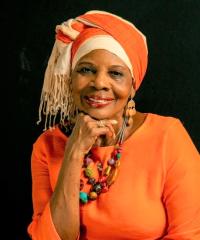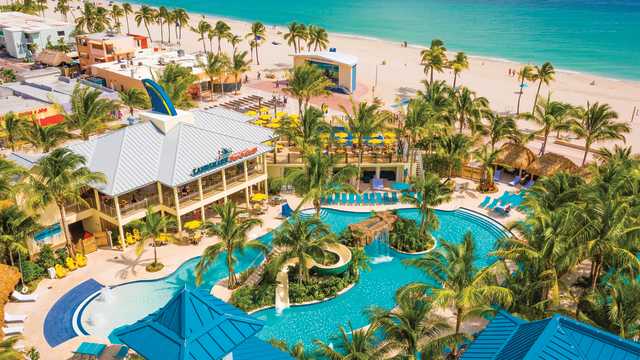
Meet one of the most prolific community leaders in Greater Fort Lauderdale. Dr. Kitty Oliver, race-relations oral historian, inspirational speaker, author and veteran journalist, shares her insights on local hidden gems, where to dine like a local, and how to take a deep dive into the area’s rich culture and history.
Ivonne MacMillan:
Q: Please share some historically significant spots in Greater Fort Lauderdale and what they mean to you.
Dr. Kitty Oliver:
A: Fort Lauderdale’s Historic Sistrunk community has such a juxtaposition of past and present. There’s the natural habitat of the centuries old north fork of the New River snaking through the area and the modern African American Research Library and Cultural Center that preserves the stories and memories of pioneer Black families. In the Dania/Hollywood area, I’ve collected oral histories of residents in Liberia, a community with strong Bahamian roots, where churches and houses still stand, built with a distinctive island style of construction and craftsmanship. And then there is the Dr. Von D. Mizell-Eula Johnson State Park, once the site of the sparse and neglected segregated Black beach, that now bears the names of the two Black civil rights activists responsible for desegregation in the Broward County.
Q: Can you describe the changes you’ve seen in the destination?
A: I remember when “the season” for tourists was from Thanksgiving to Easter, and Broward Boulevard divided Black and White neighborhoods in Fort Lauderdale. I’ve seen Spring Break fade from favor and back again as the area evolved into a major metropolitan area attracting business travelers and families, and a chic happening place for upscale visitors, including a new wave of younger people. Since the 1970’s, the influx of Black professionals and entrepreneurs, Jamaicans, Trinidadians, Haitians, Brazilians, and Spanish-speaking residents has continually transformed the area and created a vibrancy that has made us one of the most diverse areas in the country, and diversity has become our greatest asset.
Q: What are your favorite restaurants in Greater Fort Lauderdale?
A: Boatyard in Fort Lauderdale
Conch Heaven in Plantation
The Jerk Machine in Lauderhill
Ginger Bay Cafe in Hollywood
Las Vegas Cuban Cuisine in Plantation
Betty’s Soul Food Restaurant in Fort Lauderdale
Kristof’s Kafé in Davie
The Chimney House in Fort Lauderdale
Q: When friends and family come to visit, what places do you take them to?
A: The “must- see” trip for all of my visitors is our scenic drive: We go east on 17th Street Causeway for the breath-taking beauty of the Intracoastal Waterway and cruise ships, then along the beach to Las Olas Boulevard and some Elbo Room memories, then past the Las Olas isles for the New River story, ending with a stroll along Riverwalk to the Broward Center for the Performing Arts. For the adventurous, a few hours at Everglades Holiday Park is fun. For others, the tram ride at Flamingo Gardens works better. I give them a ticket for the Water Taxi and the Museum of Discovery & Science and a map and they can explore on their own.
Q: What are some hidden gems here?
A: Bonnet House Museum & Gardens and the behind-the-scenes history of the Black caretakers and other workers who maintained and enjoyed the beachfront property. The Ah-Tah-Thi-Ki Museum highlighting Seminole Indian history, culture, and rituals from personal perspectives you don’t usually get to hear. The Miramar Arts Park theater that specializes in showcasing award-winning international Caribbean and African cultural presentations you won’t see in other parts of Florida. Salutes to historic Black women in Pompano Beach include the street named for Emmy winning actress Esther Rolle, a Pompano Beach native, and homages at the Historical Ali Cultural Arts, and the Blanche Ely House Museum honoring the legacy of Black educators during the pre-integration era.
Q: If you were to enjoy a staycation here, what would that look like?
A: Breakfast on Hollywood Beach and a stroll along the Broadwalk for some people watching. A day-trip across Alligator Alley to Billie Swamp Safari for a ride through the river-of-grass Everglades, then a narrated drive through the range dotted with scores of exotic animals on display. And I’d top off the evening with the Jungle Queen Dinner Cruise along the Intracoastal with the stop on the tucked-away island for the all-you-can-eat meal and show.
Q: What annual events do you look forward to?
The annual Jazz in the Gardens in March, the Native American Arts Festival in November, and the Florida Renaissance Festival whenever it comes to town.
A: W here do you go for inspiration?
here do you go for inspiration?
Vista View Park in Davie, the “highest peak in Broward” – 70 feet. There’s nothing like getting a few snapshots of the sunset at the top of the hill, or just watching with the families and joggers who also gather around.
Q. Can you tell us more about your launching of The Change and Race Initiative?
A: The Race and Change Initiative includes interviews - many conducted in Broward County - on race and ethnic relations across cultures for historical preservation and public television documentaries and web radio podcasts featuring a range of stories, across generations, from elders to teens. The Race and Change Oral Histories archive in Special Collections at the African American Research Library and Cultural Center is the largest of its kind and scope in the country with 125 life histories of race relations experiences of Blacks, Whites, Hispanics, Asians, and West Africans.
Q: Describe Greater Fort Lauderdale in 5 words.
A: “Prettiest place I’ve ever seen.”
Learn more about Dr. Kitty Oliver and read her articles below.
From the Blog
"Florida Southern" Tastes in Fort Lauderdale
African Americans like me who grew up “Florida Southern” had a peculiar…
An Interview with Eula Johnson
History was made when the John U. Lloyd State Park in Dania Beach, FL was renamed the…
Reflections on the Black Press Locally and Nationally
As the story goes, Fort Lauderdale business pioneer Levi Henry was misquoted by one…
The Seasons of Broward: Changing Times
I used to feel a little apologetic telling people that I was born in Florida and had…




